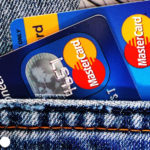There was a song in the 1980s that shot up the charts about a hard-working blue-collar woman hustling for a paycheck. That popular Donna Summer tune about a restroom attendant was titled, “She Works Hard for the Money.” What Summer didn’t call it was, “She Works Hard Out of the Goodness of Her Heart.” If you’re a small business owner, you can undoubtedly relate to this hit song’s subject. You work hard at your craft, and you deserve payment for it. This is where things can get tricky if you don’t have a solid handle on the invoice process.
With so many moving parts, invoicing can be a particularly troubling function—but it doesn’t have to be. We’ve got the invoicing tips you’re looking for on what to do, what to avoid and the one thing that can make it all easier than ever before.
DO: Brand your invoices
You should be branding every piece of company collateral. Whether it’s online or printed, with your logo and a consistent color scheme. Why? Because a logo is one of those things that just seems to legitimize a company. Your customers also might be receiving invoices from lots of different vendors, so do what you can to make yours stand out.
DO: Make them easy to understand
When you’re creating your invoices, reflect back on your own time as a consumer. Have you ever received an invoice that looked like it was poorly planned or included abbreviations that you didn’t understand? When you create yours, it’s imperative that you give a clear description of the goods or services you’ve provided. Include the total amount due to avoid confusing the customer.
Related: Use Home Service Software to Better Manage Your Finances
DO: Send to the right person
One of the worst things you can do with invoicing is sending it to the wrong person. This can cause a variety of problems for the business. First, it could be a privacy concern if you’re mistakenly disclosing a customer’s information to someone else. It also means you’re less likely to get paid. Or, at a minimum, that there will be a delay on payment. Before you finalize a sale, confirm with the customer where they want you to send the invoice, and also, who they want it sent to. Getting confirmation on those details can be especially important if you’re doing work for a business with multiple departments.
DO: Send reminders
With as much mail as we all receive, you should expect your customers to occasionally lose an invoice or simply forget to pay it. Rather than waiting around, don’t hesitate to send an invoice reminder as you’re getting close to the due date. Or even once it’s lapsed. In most cases, this gentle nudge is all it takes to jog a customer’s memory about an outstanding bill.
DO: Charge for late payments
In the event that a customer doesn’t pay after a reminder or two, don’t hesitate to institute a late fee. You can do this in several different ways. Including either as a flat rate or a percentage of the total bill. Whichever way you decide, it’s your responsibility to relay that to the customer in writing upfront so that they aren’t surprised if they incur a late fee later on.
Ready to simplify your invoicing processes? Learn how WHERK Home Service Software can help.
DON’T: Forget to invoice
This is common sense, but it’s important enough to briefly mention it. You’ll never get paid if you forget to send out an invoice.
DON’T: Procrastinate on sending invoices
Outside of not sending invoices at all, the next worst thing you can do is delaying when you send them. Don’t let customers stack up to the point that you’re sending invoices weeks or months after you’ve completed a job or you’ve shipped the goods. You should aim to send invoices immediately—ideally on the same day, if at all possible.
DON’T: Neglect to include payment terms
A late fee isn’t the only thing you must remember to include in your invoice if you want to receive prompt payment. You’ll need to explicitly list the due date and how the customer can pay, including acceptable methods of payment. If you accept personal checks, list how to address the check and the mailing address for where to send it. You should also avoid jargon terms like “Net 30” (days in which the vendor is expecting payment) and be clear with an exact date.
Related: Home Service Software Can Eliminate Billing Issues, Late Payments
DON’T: Include surprise charges
In the majority of experiences, the customer should know exactly what to expect on an invoice. In a retail setting, you would accomplish this by having clear and consistent pricing. For service jobs like maintenance or home remodeling, bidding and estimating would take place before the customer agrees to the work. Don’t try to tack on any unexplained fees or charges that the customer wasn’t aware of in advance. It’s in poor taste, and it’s likely to result in delayed payment and can damage your reputation.
DON’T: Have a non-standardized system for invoices
By using a standardized numbering-based or alphanumeric system, you’ll be able to easily track and manage invoices. For example, all invoices from the day you start creating them should be organized by number/letter, dated, and basic information on who is being charged. If a customer ever asks for a copy of an old invoice, locating it will be much easier if you have a number to reference. Without one, you could spend hours fishing through old papers or files.
Unsure about using software to increase your efficiency and simplify your processes? Check out: The Biggest Myths About Software for Small Business.
Avoid Invoicing Headaches with WHERK Home Service Software
Invoicing can be a somewhat polarizing topic among small business owners, with each having their own preferences and particulars. But one thing that small businesses will generally agree on is the benefit of using an automated system to ease the process.
With custom invoice templates and payment tracking, the home service software solution provided by WHERK is one of the best in the industry. Plus, we offer instant payment functionality that enables your customers to pay on the spot, either through a card or other customer-friendly payment options. Best of all, your templates are all stored in the cloud—and you can access them remotely from any mobile device at any time.
Sign-up today for a free 30-day trial of WHERK.




